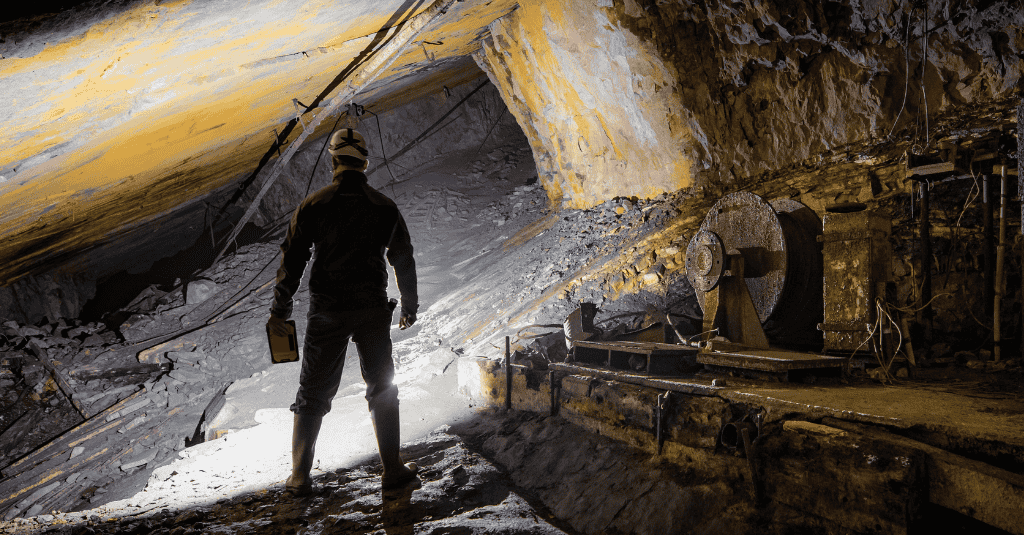Advantages of Using Mining Chemicals (part 2)
In an era of increasing demand for minerals and metals, mining chemicals are also crucial in promoting sustainability. Advanced formulations minimize waste and environmental impact while maximizing resource efficiency, aligning with global goals for greener operations.
Among the leaders in this field is Decachem, a trusted provider of high-quality solutions for the mining sector. Decachem’s innovative products exemplify the industry's reliance on specialized chemicals to meet the challenges of modern mining. With a focus on efficiency and environmental responsibility, Decachem remains one of the best in business.
Boosts Extraction Efficiency and Resource Utilization
Mining chemicals enhance the separation of valuable minerals from ores, increasing recovery rates and allowing for the economic processing of lower-grade deposits. By improving flotation, leaching, and solid-liquid separation, these chemicals maximize resource utilization and minimize waste.
Reduces Energy Consumption and Operational Costs
With specialized products like grinding aids and flotation reagents, mining chemicals streamline energy-intensive processes such as milling and beneficiation. This leads to lower energy consumption and reduced wear and tear on machinery, translating into significant operational savings.
Enhances Environmental Sustainability
The industry’s shift toward sustainable mining chemicals has introduced more eco-friendly formulations. Biodegradable options, such as organic flocculants and alternative leaching agents, reduce the environmental footprint of mining activities. Neutralizing agents and pH adjusters also help mitigate harmful by-products, promoting safer waste management practices.
By integrating eco-friendly solutions, mining companies achieve higher productivity while aligning with global standards for environmental responsibility. These advancements demonstrate the indispensable role of mining chemicals in supporting both economic and sustainable mining operations.
Challenges and Risks Associated with Mining Chemicals
While mining chemicals play a pivotal role in optimizing mining operations, their use also presents several challenges and risks, especially related to environmental impact, worker health, and regulatory compliance. Addressing these concerns is critical for ensuring that the benefits of mining chemicals are achieved safely and responsibly.
Environmental Impact
One of the most significant challenges of using mining chemicals is the potential for environmental contamination. Chemicals used in ore processing, such as cyanide, solvents, and flotation agents, can leach into the soil or water systems if not handled correctly. The risk of water contamination in nearby rivers, lakes, or groundwater sources can be especially harmful to local ecosystems and communities. Ensuring proper storage, disposal, and treatment of chemical waste is crucial to minimizing environmental damage and maintaining environmental compliance.
Worker Health and Safety
Exposure to toxic chemicals poses a serious risk to the health and safety of workers in the mining industry. Many mining chemicals, such as cyanide, sulfuric acid, and ammonia, can cause serious harm through inhalation, skin contact, or accidental ingestion. The proper handling, storage, and disposal of these chemicals are essential for chemical safety. Regular safety training and the use of personal protective equipment (PPE) can help reduce the risk of accidents and ensure a safer working environment.

Regulatory Compliance
As environmental concerns grow, global regulations on the use of chemicals in the mining industry are becoming more stringent. Companies must comply with local and international standards, such as REACH (Registration, Evaluation, Authorisation, and Restriction of Chemicals) and EPA guidelines, to avoid penalties and reputational damage. Staying ahead of evolving regulations requires continuous monitoring and adjustments to chemical practices, making mining industry challenges more complex and costly for operators.
By addressing these risks through proper safety measures, environmental management, and adherence to regulations, mining companies can mitigate the negative impact of mining chemicals while ensuring sustainable and safe practices.
Innovations and Trends in Mining Chemicals
The mining industry is experiencing significant advancements in the development and application of mining chemicals, driven by the need for greater efficiency, sustainability, and safety. Innovations in green mining technology are reshaping the way chemicals are used, with a focus on reducing environmental impact and improving operational performance.
Development of Green Chemicals and Sustainable Practices
One of the key trends in mining chemicals is the development of green chemicals, which are designed to be less toxic and more environmentally friendly. These include biodegradable flotation agents, alternative leaching agents, and non-hazardous solvents. These chemicals reduce the harmful effects of mining processes on soil and water, contributing to a cleaner and more sustainable industry. Additionally, companies are increasingly adopting sustainable practices, such as recycling water and minimizing chemical waste, to further enhance their environmental footprint.
Use of AI and IoT for Optimized Chemical Application
The integration of artificial intelligence (AI) and the Internet of Things (IoT) is transforming the way mining chemicals are applied. Smart sensors and AI algorithms enable real-time monitoring and precise dosing of chemicals in mining operations. This not only improves the efficiency of chemical use but also reduces waste and costs. By continuously optimizing chemical applications, mining companies can achieve better mineral recovery rates while minimizing unnecessary chemical consumption.
Increased Adoption of Biodegradable and Less Toxic Chemicals
The trend toward using biodegradable and less toxic chemicals is gaining momentum. These chemicals are not only safer for the environment but also offer better regulatory compliance in the face of increasing environmental scrutiny. Their adoption helps mining companies meet stringent environmental regulations while promoting a safer, more sustainable industry.
These innovations in mining chemicals are a testament to the industry's commitment to sustainable practices and efficiency. By embracing these advancements, mining companies can drive progress while reducing their environmental and operational risks.
FAQs About Mining Chemicals
What are mining chemicals used for?
Mining chemicals are used in various stages of the mining process to optimize mineral extraction and processing. They play a crucial role in separating valuable minerals from ores, improving flotation, enhancing leaching processes, and aiding in the grinding and dewatering of minerals. Key examples include
flotation reagents like frothers and collectors,
leaching agents like cyanide, and
grinding aids that boost milling efficiency.
Are mining chemicals harmful to the environment?
Mining chemicals can be harmful to the environment if not properly managed. Some chemicals, such as cyanide and sulfuric acid, can contaminate soil and water if they leak or are improperly disposed of. However, there is a growing shift toward
eco-friendly solutions, including biodegradable and less toxic alternatives, to mitigate environmental risks. Proper storage, handling, and waste treatment are essential for minimizing the environmental impact of mining chemicals.
How are mining chemicals regulated globally?
Mining chemicals are regulated by strict global standards to ensure safe chemical use in mining and to protect both the environment and human health. Regulatory frameworks, such as
REACH (Registration, Evaluation, Authorization, and Restriction of Chemicals) in Europe and the
EPA (Environmental Protection Agency) guidelines in the U.S., oversee the use, transport, and disposal of mining chemicals. These regulations aim to minimize the risks of chemical exposure and ensure sustainable practices within the mining industry.
These
mining chemical FAQs highlight the importance of safe chemical use in mining to ensure both operational success and environmental responsibility.
Conclusion
Mining chemicals are integral to modern mining practices, driving the efficiency and productivity of mineral extraction and processing. They play a vital role in enhancing ore recovery, reducing energy consumption, and improving the overall performance of mining operations. As the industry evolves, balancing productivity and sustainability becomes increasingly important. The future of mining chemicals lies in continued innovation—with a focus on green mining technology and eco-friendly solutions—to meet both operational goals and environmental standards.
At the same time, responsible mining practices, including safe chemical handling and waste management, are essential to minimize environmental impact and protect worker health. By embracing new technologies and prioritizing sustainability, the mining industry can ensure a cleaner, safer, and more efficient future.
















